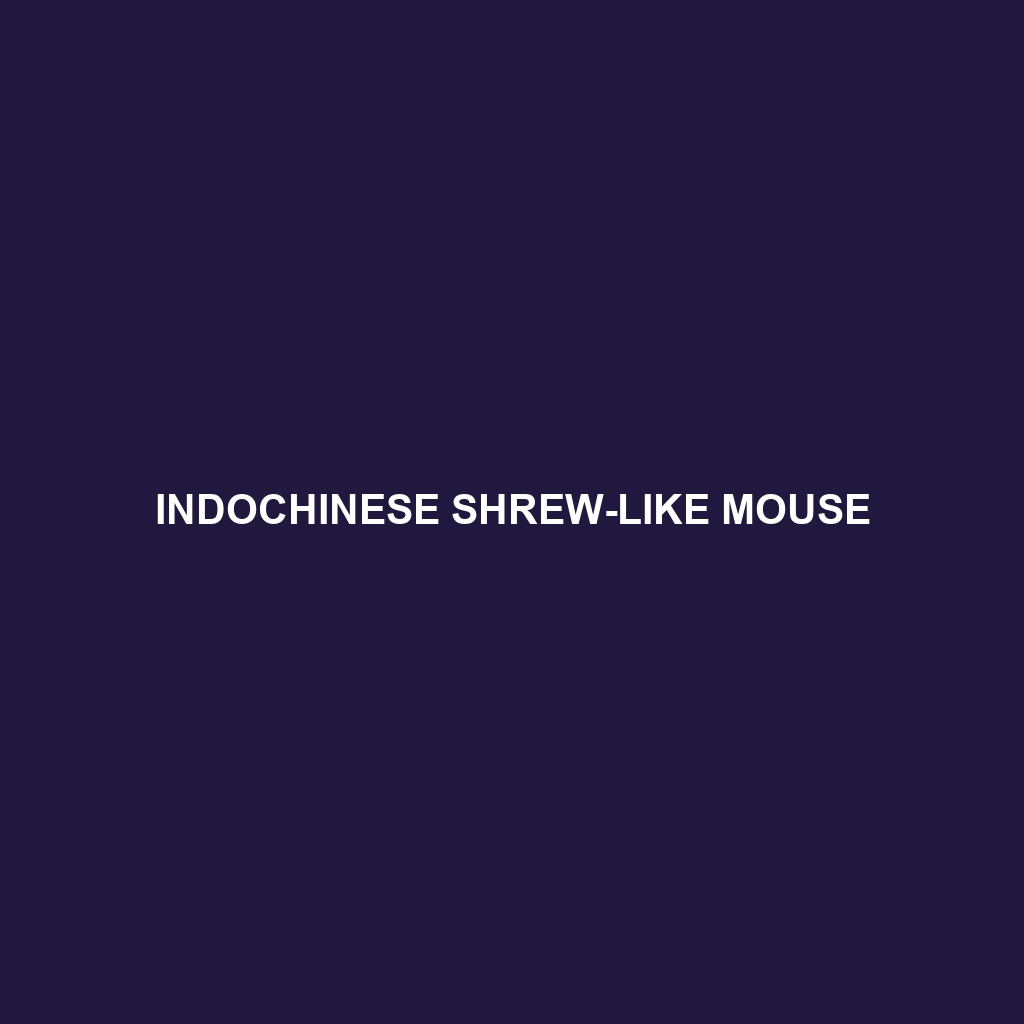Common Name: Indochinese Shrew-like Mouse
Scientific Name:
Habitat:
The Indochinese Shrew-like Mouse is primarily found in Southeast Asia, particularly in the dense forests and mountainous regions of Thailand, Vietnam, and Laos. This species thrives in moist, tropical environments that provide ample cover and food sources.
Physical Characteristics:
Measuring approximately 10-15 cm in length, the Indochinese Shrew-like Mouse exhibits a slender body covered with soft, brownish-grey fur. Its fur often blends with the leaf litter of its habitat, providing essential camouflage against predators. The mouse has a prominent snout, large ears, and small, beady eyes, which contribute to its shrew-like appearance. Notably, its long tail is almost as long as its body, aiding in balance as it navigates through the forest underbrush.
Behavior:
The Indochinese Shrew-like Mouse is primarily nocturnal, engaging in foraging activities under the cover of darkness. It is known for its agility and quick movements, often scurrying across the forest floor in search of food. Socially, these mice tend to be solitary, coming together only during the breeding season. Their ability to navigate dense vegetation makes them adept at avoiding predators.
Diet:
This species primarily feeds on insects, fruits, and seeds, showcasing an omnivorous diet. The Indochinese Shrew-like Mouse is particularly noted for its foraging techniques, often probing into the leaf litter for hidden food sources. This diverse diet helps maintain the ecological balance by controlling insect populations and dispersing seeds throughout its habitat.
Reproduction:
The breeding season for the Indochinese Shrew-like Mouse typically occurs during the rainy months, enhancing the survival rate of its offspring. Females give birth to litters of 2-5 young after a gestation period of about three weeks. The young are born blind and helpless but rapidly develop, becoming independent after a few weeks. Maternal care is intensive, with mothers nurturing and protecting their young until they are ready to venture out on their own.
Conservation Status:
The Indochinese Shrew-like Mouse is currently listed as vulnerable due to habitat loss and fragmentation resulting from deforestation and agricultural expansion in Southeast Asia. Conservation efforts are essential to preserve its natural habitat and ensure the survival of this unique species.
Interesting Facts:
One fascinating aspect of the Indochinese Shrew-like Mouse is its remarkable adaptability to various forest environments. Additionally, this species is often studied for its unique foraging behaviors, which contribute valuable insights into the ecological dynamics of tropical forests.
Role in Ecosystem:
The Indochinese Shrew-like Mouse plays a critical role in its ecosystem as both a predator and prey. By controlling insect populations, it helps maintain the health of its forest habitat. Furthermore, as a food source for larger predators, it is integral to the food web, showcasing the interconnectedness of forest ecosystems.
